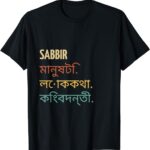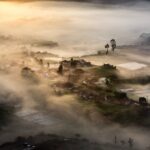Unique to Bangladesh is its rich cultural heritage, with a diverse mix of traditions, languages, and festivals. Bangladesh is known for its vibrant and colorful festivals, such as Pohela Boishakh, the Bengali New Year, and the traditional boat races during the festival of Nabanno.
The country also boasts the largest river delta in the world, the Sundarbans, home to the elusive Bengal tiger and a haven for biodiversity. With its unique blend of history, natural beauty, and warm hospitality, Bangladesh offers a one-of-a-kind experience for visitors.
The country’s traditional handicrafts, including delicate Nakshi Kantha embroidery and clay pottery, showcase the artistic prowess of its people. From its culinary delights like biryani and pitha to the melodious strains of Bengali music, Bangladesh is a treasure trove of distinctive cultural riches.

Credit: m.facebook.com
Rivers Of Bangladesh
When it comes to natural wonders, the rivers of Bangladesh are an integral part of the country’s unique beauty. With its extensive network of waterways, Bangladesh boasts an unparalleled diversity of rivers, each with its own significance and role in shaping the landscape and livelihood of the nation.
The Mighty Brahmaputra
The Brahmaputra, known as the Jamuna in Bangladesh, is one of the major rivers in the country. Originating in the Tibetan Himalayas, it flows through the northeastern region of Bangladesh, contributing to the fertile plains and sustaining the agricultural activities that are vital to the country’s economy. The Brahmaputra’s sheer magnitude and the diversity of life it supports make it a force to be reckoned with, shaping the very essence of Bangladesh.
The Ganges: A Lifeline
The Ganges, or Padma as it’s known in Bangladesh, is another significant river that holds immense cultural and religious importance for the people. It serves as a lifeline, providing water for irrigation, sustenance for aquatic life, and a source of spiritual cleansing for countless devotees who flock to its banks. The Ganges is not just a river; it is a symbol of resilience, hope, and deep-rooted traditions that have stood the test of time.
Cultural Diversity
Cultural diversity in Bangladesh is truly unique, encompassing varied ethnic groups, languages, and traditions. The country’s rich history, vibrant festivals, and traditional art forms reflect its cultural tapestry. From the colorful festivals to the diverse cuisine, Bangladesh offers a one-of-a-kind cultural experience.
Bangladesh, a land of rich heritage and vibrant traditions, is known for its remarkable cultural diversity. The country is a melting pot of diverse ethnicities and cultures that have blended harmoniously over centuries. From ethnic traditions to colorful festivals and celebrations, Bangladesh offers a unique cultural experience that is both mesmerizing and captivating.Ethnic Traditions
Bangladesh is home to various ethnic communities, each with its distinct traditions and customs. The tribal groups, such as the Chakma, Marma, and Garo, have preserved their ethnic traditions for generations. These communities have their own unique languages, clothing styles, and art forms, showcasing their rich cultural heritage. The Chakma community, for instance, is famous for their intricate handloom weaving techniques and vibrant textiles. The Marma people are renowned for their exceptional skills in woodworking and bamboo crafts. Similarly, the Garo community is known for their vibrant dances and mesmerizing music that reflect their connection with nature.Festivals And Celebrations
The people of Bangladesh celebrate a wide array of festivals and celebrations throughout the year. These festivities display the cultural richness and religious diversity of the country. From religious occasions like Eid-ul-Fitr, Durga Puja, and Christmas to national events like Independence Day and Victory Day, the calendar is filled with joyous celebrations. Among the festivals, Pohela Boishakh, the Bengali New Year, is one of the most widely celebrated cultural events in Bangladesh. The day starts with colorful processions, cultural programs, and traditional food. The festival brings together people from all walks of life, reflecting the unity and diversity prevalent in the country. Another significant festival is the Bishwa Ijtema, one of the largest congregations of Muslim devotees in the world. It attracts millions of people who gather to seek spiritual enlightenment and engage in prayers and religious discourses. This grand event showcases the religious tolerance and harmony that exist in Bangladesh. In conclusion, Bangladesh’s cultural diversity is a major attraction for travelers and enthusiasts seeking to explore a land steeped in tradition and heritage. The ethnic traditions and vibrant festivals provide a glimpse into the rich tapestry of cultures that make Bangladesh truly unique.Bengali Cuisine
When it comes to Bengali Cuisine, one cannot help but be captivated by its rich spices and flavors. The cuisine of Bangladesh is a delightful amalgamation of tastes, aromas, and ingredients that are unique to the region. From the fiery spices to the distinct blend of flavors, Bengali cuisine is a culinary adventure that entices the taste buds.
Spices And Flavors
Bengali cuisine is renowned for its vibrant use of spices and flavors. The aromatic spices not only enhance the taste of the dishes but also provide numerous health benefits. The primary spices used in Bengali dishes include turmeric, cumin, coriander, mustard seeds, and fenugreek. These spices not only add depth and complexity to the flavors but also offer medicinal properties.
The flavors of Bengali cuisine are a perfect balance of sweet, salty, sour, and spicy. This culinary artistry is achieved by incorporating ingredients such as tamarind, mustard oil, yogurt, coconut, and dried fruits. The combination of these ingredients results in mouthwatering dishes that are cherished by locals and visitors alike.
Distinctive Dishes
Bengali cuisine boasts an array of distinctive dishes that showcase the region’s culinary excellence. One such dish is the world-famous Rosogolla. This soft and spongy dessert made with cottage cheese and dipped in syrup is a sweet treat that is loved by people of all ages.
In addition to Rosogolla, Bengali cuisine offers a variety of other unique dishes. Machher Jhol, a flavorful fish curry made with a combination of spices and mustard oil, is one such dish that is a staple in Bengali households. It perfectly captures the essence of the region’s love for fish and spices.
Another distinctive dish is Shorshe Ilish, which features hilsa fish marinated in a spicy mustard sauce and cooked to perfection. This dish exemplifies the flavors and techniques that make Bengali cuisine so special.
One more popular dish is Shorshe Pabda, which features a catfish variety cooked in a tangy mustard sauce. The use of mustard as a key ingredient gives this dish a distinctively unique taste that is deeply rooted in Bengali culinary traditions.
These are just a few examples of the many distinctive dishes that make Bengali cuisine so special. Each dish has its own story and heritage, reflecting the cultural diversity and history of Bangladesh.

Credit: www.linkedin.com
Natural Beauty
Natural beauty is abundant in the breathtaking landscapes of Bangladesh, making it a paradise for nature lovers and adventurers.
The Sundarbans Mangrove Forest
The Sundarbans, located in southwest Bangladesh, is the world’s largest mangrove forest and a UNESCO World Heritage Site. Spanning over 10,000 square kilometers, this dense forest is home to various unique plant and animal species.
Hill Tracts Of Chittagong
The Hill Tracts of Chittagong, nestled in the southeastern part of Bangladesh, offer a mesmerizing combination of lush green mountains, winding rivers, and exotic flora and fauna. The region is inhabited by numerous indigenous communities, each with their distinct culture and traditions.
The Sundarbans Mangrove Forest
The Sundarbans, located in southwest Bangladesh, is the world’s largest mangrove forest and a UNESCO World Heritage Site. Spanning over 10,000 square kilometers, this dense forest is home to various unique plant and animal species.
Hill Tracts Of Chittagong
The Hill Tracts of Chittagong, nestled in the southeastern part of Bangladesh, offer a mesmerizing combination of lush green mountains, winding rivers, and exotic flora and fauna. The region is inhabited by numerous indigenous communities, each with their distinct culture and traditions.
| The Sundarbans Mangrove Forest | Hill Tracts of Chittagong |
|---|---|
| The Sundarbans, located in southwest Bangladesh, is the world’s largest mangrove forest and a UNESCO World Heritage Site. Spanning over 10,000 square kilometers, this dense forest is home to various unique plant and animal species. | The Hill Tracts of Chittagong, nestled in the southeastern part of Bangladesh, offer a mesmerizing combination of lush green mountains, winding rivers, and exotic flora and fauna. The region is inhabited by numerous indigenous communities, each with their distinct culture and traditions. |
- The Sundarbans, located in southwest Bangladesh, is the world’s largest mangrove forest and a UNESCO World Heritage Site.
- It spans over 10,000 square kilometers and is home to various unique plant and animal species.
- The Hill Tracts of Chittagong, nestled in southeastern Bangladesh, offer stunning landscapes with lush green mountains and winding rivers.
- The region is also known for its diverse flora and fauna, making it a haven for nature enthusiasts.
- The Hill Tracts are inhabited by numerous indigenous communities, each showcasing their distinct culture and traditions.
Architectural Marvels
Bangladesh showcases diverse architectural marvels, with the historic Shat Gambuj Mosque in Bagerhat standing out as a UNESCO World Heritage site. The intricate terracotta embellishments and curved cornices of the Sixty Dome Mosque in Bagerhat are a unique testament to the country’s rich architectural heritage.
Ancient Temples
Exploring the architectural marvels of Bangladesh is like embarking on a journey through time. Bangladesh is home to a rich heritage of ancient temples that showcase intricate craftsmanship and historical significance. These temples, with their exquisite design and spiritual ambiance, bear witness to the country’s deep-rooted religious traditions. When it comes to ancient temples, the most prominent one is the Somapura Mahavihara. Built in the 8th century, this UNESCO World Heritage Site is an exceptional example of Buddhist architecture. Its grand scale, extensive terracotta ornamentation, and well-preserved ruins make it a must-visit destination for history enthusiasts. Moving on to the Kantajew Temple, situated in Dinajpur district, it is an architectural gem from the 18th century. This terracotta temple boasts intricate carvings depicting various scenes from Hindu mythology. The ornate gateway, towering spires, and intricately adorned pillars leave visitors awe-struck by the craftsmanship of the artisans of that era.Mosques And Palaces
Bangladesh also showcases a stunning collection of mosques and palaces, each with its own story and architectural style. One such masterpiece is the Sixty Dome Mosque, also known as Shat Gambuj Mosque. Located in the historic city of Bagerhat, this mosque was built in the 15th century and is a remarkable example of medieval Islamic architecture. Its sixty domes, arched gateways, and intricate terracotta decorations make it an iconic symbol of the country’s Muslim heritage. In addition to mosques, Bangladesh is also home to several magnificent palaces that have stood the test of time. The Ahsan Manzil, or the Pink Palace, is a prime example. Situated on the banks of the Buriganga River in Dhaka, it served as the official residence of the Nawabs of Dhaka during the British era. With its pink facade, ornate balconies, and beautiful gardens, the palace offers a glimpse into the opulent lifestyle of the aristocracy. Overall, Bangladesh’s architectural marvels, be it ancient temples, mosques, or palaces, are a testament to the rich cultural heritage of the country. Exploring these structures allows visitors to delve into the history and experience the grandeur of Bangladesh’s past.
Credit: poseidonexpeditions.com
Frequently Asked Questions Of What Is Unique To Bangladesh?
What Are The Famous Tourist Attractions In Bangladesh?
Bangladesh offers a range of unique tourist attractions such as the Sundarbans, Cox’s Bazar beach, and the historical city of Dhaka. The Sundarbans is a UNESCO World Heritage Site and home to the royal Bengal tiger. Cox’s Bazar beach is the longest natural sandy beach in the world, perfect for sunbathing and swimming.
The city of Dhaka showcases a mix of ancient and modern architecture, including the stunning Lalbagh Fort and Pink Palace.
What Is The Traditional Cuisine Of Bangladesh?
The traditional cuisine of Bangladesh is known for its rich flavors and aromatic spices. Some popular dishes include biryani, a flavorful rice dish mixed with meat or vegetables, and hilsa curry, made with the national fish of Bangladesh. Other specialties include pitha, a type of sweet cake made with rice flour and jaggery, and shorshe ilish, hilsa fish cooked in a mustard sauce.
What Is The Cultural Significance Of Bangladesh?
Bangladesh has a rich cultural heritage that is reflected in its art, music, literature, and festivals. The country is known for its traditional folk music, such as Baul and Lalon songs, which often depict philosophical and mystical themes. Bangladesh is also known for its vibrant art scene, with famous artists such as Zainul Abedin and Shakoor Majid contributing to the country’s cultural heritage.
Festivals like Pohela Boishakh (Bengali New Year) and Durga Puja are celebrated with great enthusiasm throughout the country.
Conclusion
Bangladesh offers a captivating blend of cultural heritage, natural wonders, and warm hospitality. From the diverse landscapes of the Sundarbans to the vibrant cities like Dhaka and the historic sites of Old Dhaka, the country is truly unique. Its traditional arts and crafts, mouthwatering cuisine, and vibrant festivals add to its allure.
Exploring Bangladesh is like unraveling a hidden gem, where you can discover its rich history, breathtaking landscapes, and friendly locals. So, why wait? Plan your trip to Bangladesh today and experience its distinct charm firsthand.


